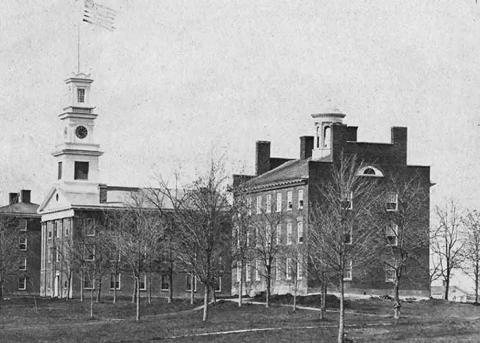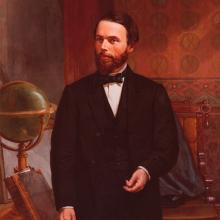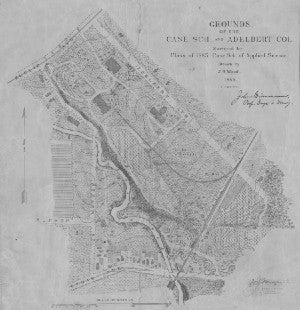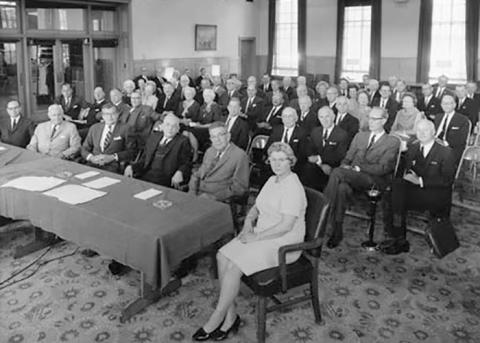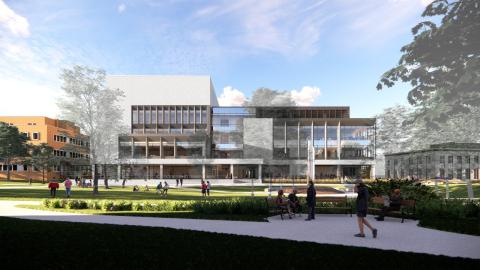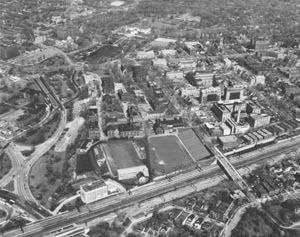Collaboration Across Two Centuries
Western Reserve’s beginnings
Case Western Reserve University traces its start to the founding of Western Reserve College in 1826 in Hudson, Ohio. Named for the region then known as the Western Reserve of Connecticut, the institution came to distinguish itself in part through an emphasis on the humanities and a medical school that admitted women.
As the population of Northern Ohio expanded, demand for a university in the metropolitan center of Cleveland grew. Local industrialist Amasa Stone provided the funding that moved the campus from Hudson to Cleveland, where it took on the name Western Reserve University to suit a broader range of academic offerings.
Leonard Case’s gift and its legacy
As the end of the industrial revolution propelled society forward, Leonard Case Jr. provided the vision and foundation for technical and scientific study in Cleveland. In life, Case would associate with prominent Clevelanders and make an imprint on the Cleveland landscape. In death, the philanthropist would provide the endowment that would establish Case School of Applied Science.
Case quietly started a deed trust in 1876 to launch a technical school—leaving $1.25 million and 200 acres of land in his will to establish the Case School of Applied Science. The institution opened in 1881 on Rockwell Avenue and moved uptown in 1885.
This relocation was possible thanks to a 43-acre parcel of land sold at a discount to the community from city leaders Cordelia Cozad Ford and Liberty E. Holden.
A joint committee made up of Western Reserve and Case representatives raised $119,400 from 56 donors to purchase Ford and Holden’s land. A provision in Stone’s gift specified that Western Reserve and Case should be situated next to each other, and the specification would set in motion the institutions’ partnership.
Joining forces
As the 20th century neared its halfway point, leaders from both institutions began to recognize the benefits of an official partnership between the science and engineering powerhouse—renamed Case Institute of Technology in 1947—and the liberal arts pillar, Western Reserve.
Case Institute of Technology and Western Reserve University students shared spaces and crossed paths in the same social circles for years, but in 1967 solidified a partnership after a decades-long rivalry. The process was not without friction but together, they forged a single identity with combined academic resources. On July 1, 1967, the newly federated Case Western Reserve University became an official entity.
CWRU in the 21st century
More than five decades after federation, Case Western Reserve has extended its focus on interdisciplinarity through the digital era. It navigated the move to online learning during the COVID-19 pandemic and hosted the first 2020 presidential debate through the unprecedented global circumstances. Today, the university continues to shape Cleveland’s University Circle neighborhood through partnerships with other world-class institutions with a shared upward trajectory, including Cleveland Museum of Art, University Hospitals and Cleveland Clinic. Soon, the campus will serve as a renewed stage for collaborative discovery as the Interdisciplinary Science and Engineering Building is completed and welcomes occupants in the fall of 2026.
CWRU through the years
Case Western Reserve University’s campus has evolved with the expansion of predecessor institutions, through federation and alongside the advancement of STEM and liberal arts disciplines. See how the campus has changed from Hudson to Cleveland and from its beginnings to the present.



